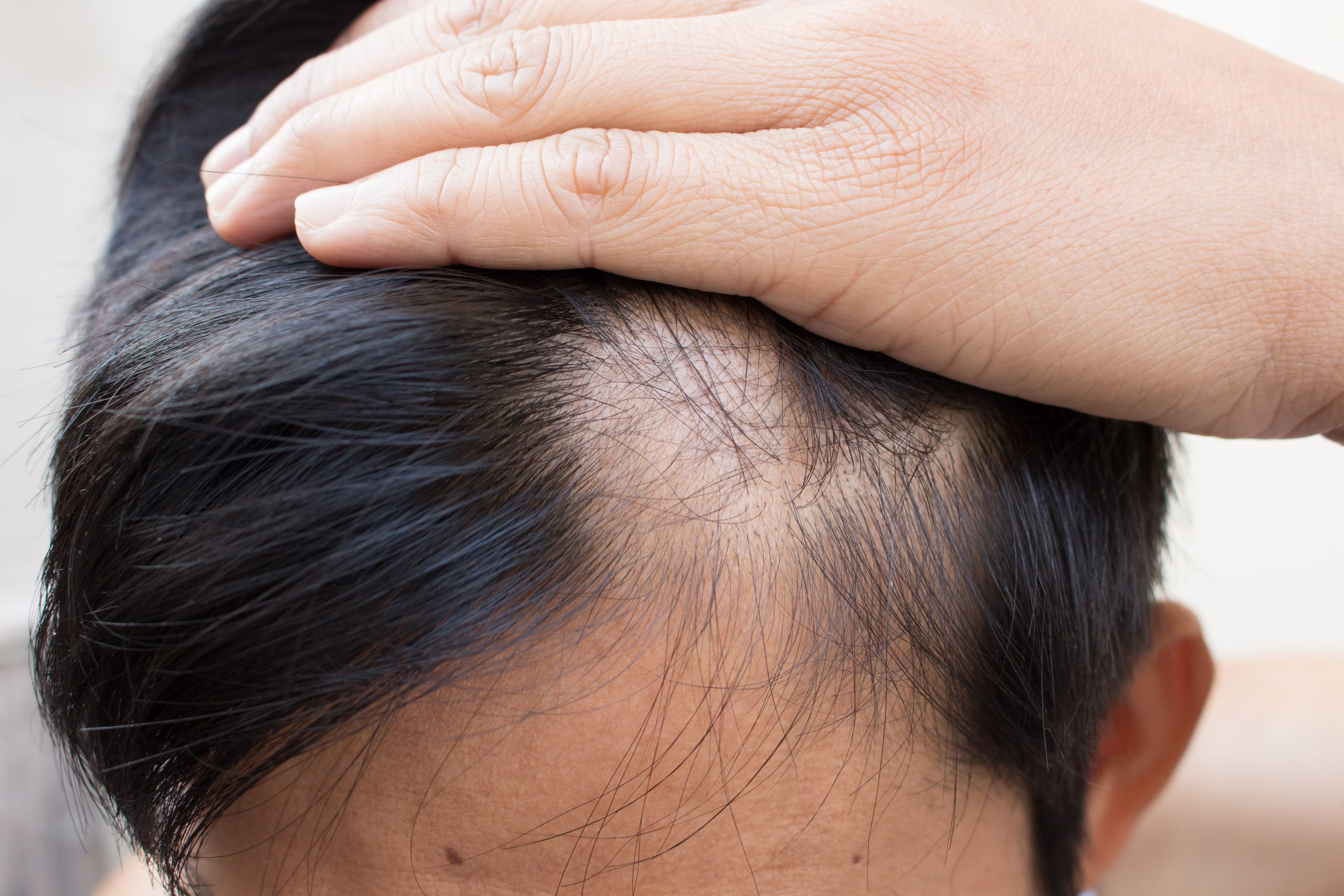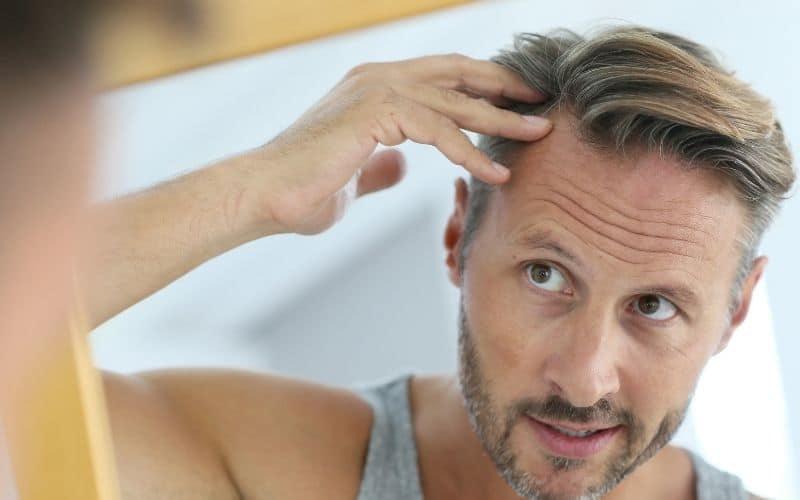Table Of Content

Hair may stop shedding when you stop taking the medication. If you believe medications are causing your hair to fall out, talk to your healthcare provider about changing dosages or finding an alternative medication. The normal amount of hair you lose daily shouldn't change rapidly—and it's important to differentiate between running your hands through your hair and pulling on your strands, notes Kingsley.
Mayo Clinic Press
However, when an individual experiences a substantial increase in daily hair shedding, it may be classified as excessive. Medically referred to as telogen effluvium, this condition signifies an abnormality in the hair-shedding process. Female-pattern baldness typically starts with scalp hairs becoming progressively less dense. Many women first experience hair thinning and hair loss where they part their hair and on the top-central portion of the head. Baldness typically refers to excessive hair loss from your scalp.
Charitable Care & Financial Assistance
The hair growth cycle consists of three main phases—anagen, catagen, and telogen—and each follicle on your head could be going through any one of these at any given time. On a similar note, many people experience lowered iron levels when they get their period or just in general, and that can throw things off, according to Kingsley. Excessive hair fallout from taking medication is usually temporary.
Antifungal Medications
Hair with plenty of volume, movement, and shine is what most people consider healthy. So when you look down at the drain and see a clump of lost hair strands, it’s easy to assume that there’s a health problem causing hair loss. But some hair loss is normal for everyone and at every age. However, if you have long hair you can notice it while taking a shower, brushing the hair on drains, combs, and clothes. Excessive hair fall could be happening due to a variety of reasons. Weight loss, stress, hormonal imbalance, childbirth, menopause, or recovery after surgery.
These are three of the most common circumstances that can throw off how much hair you're losing daily. Here's how many strands you can expect to see in your brush, in the shower, and in your hands when you run them through your hair. If you try supplements for hair loss, make sure you know what exactly you’re taking.
Menopause and hair loss: everything you need to know - Women's Health UK
Menopause and hair loss: everything you need to know.
Posted: Wed, 31 Jan 2024 08:00:00 GMT [source]
How Much Hair Is Normal to Lose Every Day?
Whatever you do, all experts advise checking in with your doctor before taking any action. "Every form of hair loss is different and treatment depends on the type of hair loss the individual is dealing with," says Dr. McMichael. The range of how much hair you lose when washing it varies.
Your shorter hairs — like eyelashes, arm and leg hair, and eyebrows —have a short anagen phase (about one month). Stopping hair loss indefinitely depends upon the underlying cause. As a general rule, the sooner you treat hair loss, the more likely you will be able to reverse or reduce the rate of hair loss. Newer treatments that are also being explored include some forms of laser therapy, microneedling with PRP, as well as other oral medications.

Only about 1 to 2 percent of your hairs are in the catagen phase at any given time. If you can’t live without these styling tools, use a thermal spray to coat the fibers in the hair to help protect it. Sun can also damage hair so opt for a hat when it’s sunny and you’ll be outdoors. Dr. Bergfeld also recommends using a wide tooth comb to help tame your locks. Using a bristle brush or small toothed comb can cause breakage and pull out more hair.
If your hair just doesn't seem to look the same way that it used to when you style it, that too could be a sign that your hair might be thinning. If your straightened hair looks flat, your natural hair just doesn't have the life it used to, or your style won't hold, there might actually be a real reason for that. Try some of the other tests mentioned here, and if you’re worried — as always — contact your health care provider. Another thing Dr. Fox suggests paying attention to is the amount of hair you’re shedding when you’re brushing your hair.
As part of your hair’s growth cycle, new strands grow and take the place of the ones you shed. Alopecia areata is an autoimmune condition that causes your immune system to attack hair follicles, resulting in bald patches that can range from small to large. Female pattern baldness often results in thinning all over the scalp and might look like widening or thinning around the part. It typically occurs after age 65 but, for some females, it can begin early in their lives.
Hair shedding is not to be confused with hair thinning, which refers to a decrease in the thickness of new strands that are growing in rather than the number of strands that fall out. Hair thinning is often linked to changes in hormones, such as from androgenetic alopecia, aka male or female pattern baldness, says Kingsley. Both shedding and thinning can contribute to an overall decrease in the fullness of your hair. Talk to your healthcare provider if an abnormal amount of your hair is falling out. You may need to see a dermatologist (a doctor specializing in skin, hair, and nails) who can tell you whether you are experiencing hair shedding, hair loss, or both. Losing around 50–100 hairs daily through combing, brushing, washing, and styling is normal.
Many of these treatments are still in the early testing phases though, and more research will be necessary. Your clinician might prescribe anti-inflammatory medications, like corticosteroids, if hair loss seems related to an autoimmune condition. Because so many things can cause hair loss, it’s best to schedule an appointment with a medical professional if you notice any changes in your hair. While it’s more prevalent in older adults, anyone can experience it, including children. A typical hair transplant involves removing patches of hair from your head and reinserting the hair follicle by follicle into the bald sections. Anyone who notices that they are losing much more hair than they usually do should see their doctor to help determine the underlying cause.
Experts say the average number of hairs shed by men and women per day is about the same. However, women or people with long hair are more likely to notice hair loss, explains Andy Goren, M.D., board-certified dermatologist, trichologist, and chief medical officer of Daniel Alain. Goren says 60% of women who suffer from the most common form of permanent hair loss, androgenic alopecia, exhibit excessive shedding of more than 400 hairs per day when washing their hair.
If you find more than ten, you might want to reach out to your doctor. However, if you’re consistently seeing a lot more hair on your pillow than you’re used to, that could potentially be a sign that you’re losing more hair than you should be. The short answer to, "How much hair loss is normal?" is 100 strands per day, on average, but you can lose more or less than that even when nothing's wrong.
Managing any underlying health conditions improves hair loss. And early treatment of alopecia may reduce the speed of thinning and promote regrowth. A healthcare provider can tell you more about what to expect in your situation. Men are more prone to the genetic inheritance of abnormal hair fall known as androgenic alopecia. The hair fall in men can be noticed in the form of receding hairline, thinning hair, and sometimes as a horseshoe-shaped pattern. Prevention is always better than cure, which means even if one has normal hair fall per day, they must still opt for a hair loss prevention.
Pay attention to how much hair is falling onto the floor while you’re styling it as well as how much your brush collected. Make sure you start with a totally clean brush and stand on a towel so you can easily gather and assess the amount of hair in your brush and that fell onto the floor. While the terms "male-pattern hair loss" and "female-pattern hair loss" may sound outdated, they're the best terms to describe what's going on with your scalp. "This is something I talk to patients about a lot. In general, I tell patients not to worry if their daily hair loss is 150 or less — maybe even 200 hairs for people with thick hair," Dr. Kuhn says.

No comments:
Post a Comment